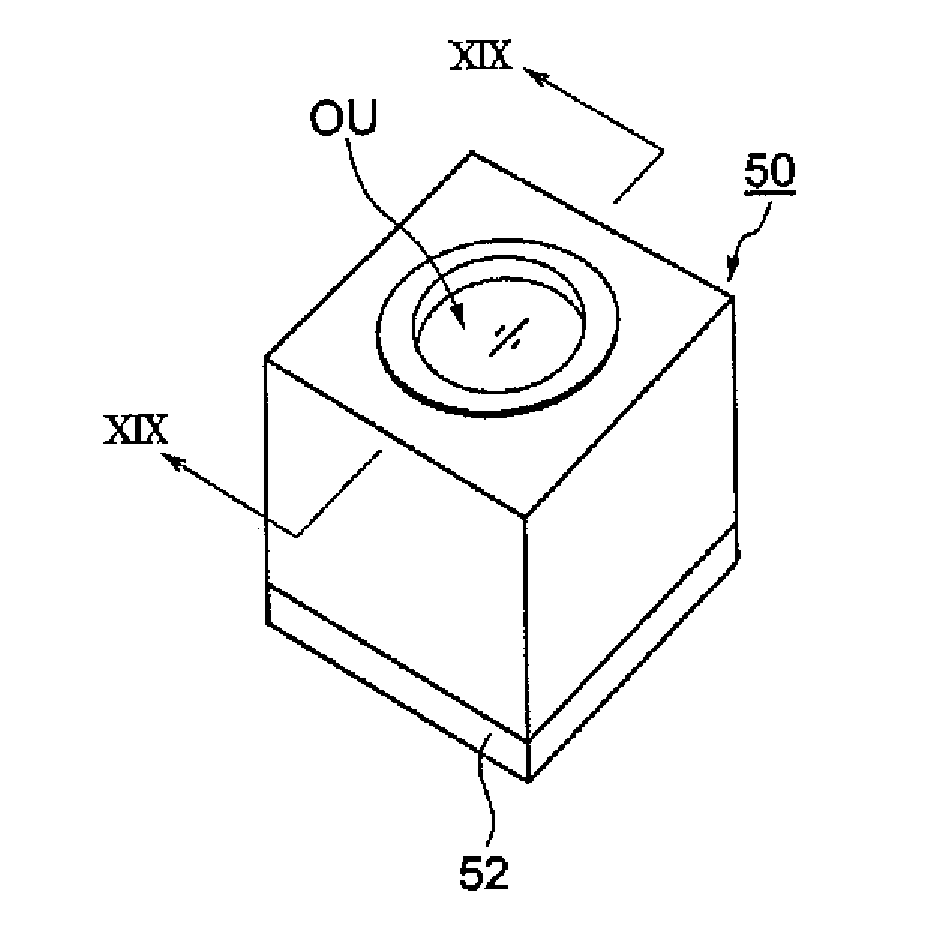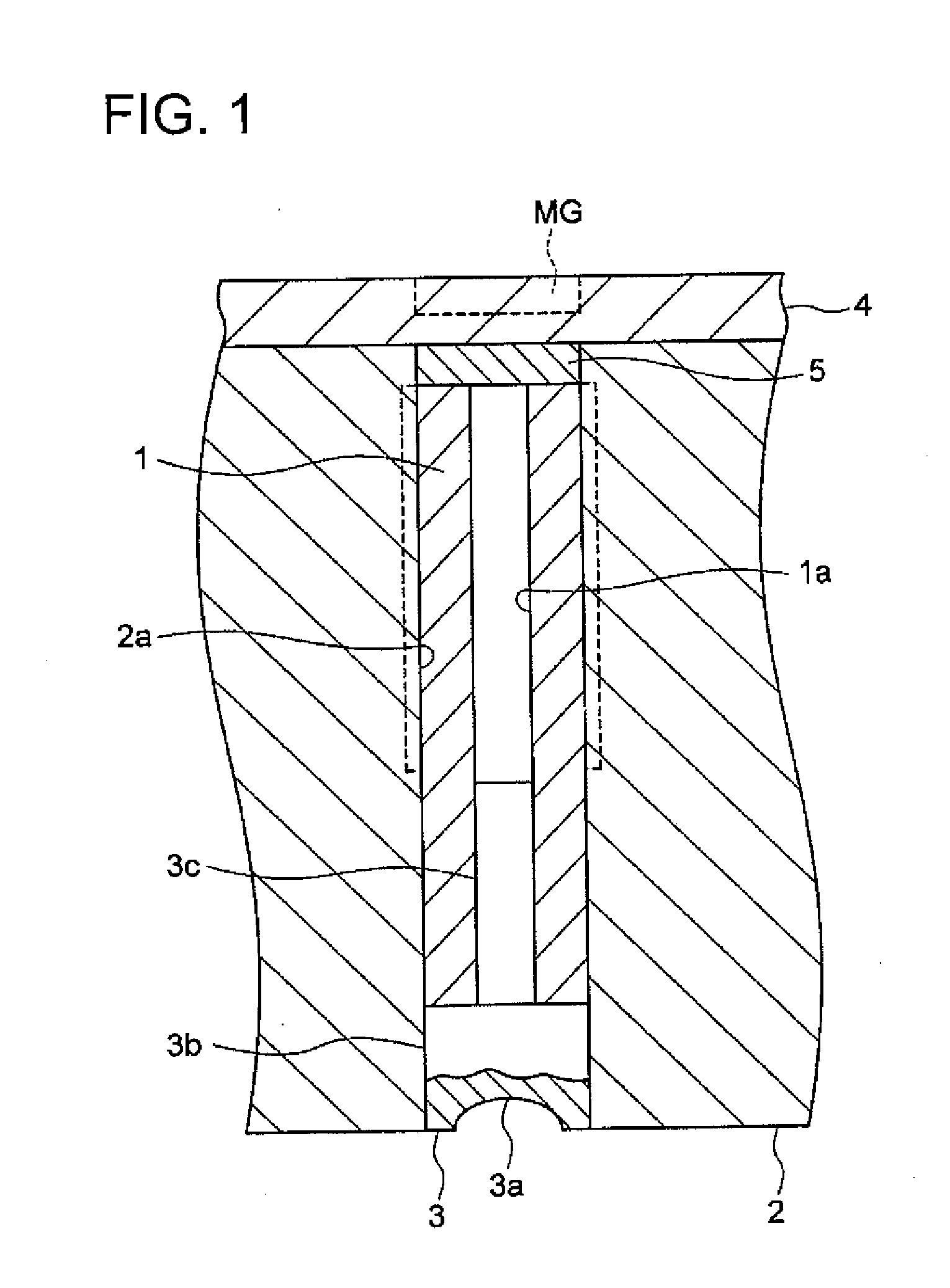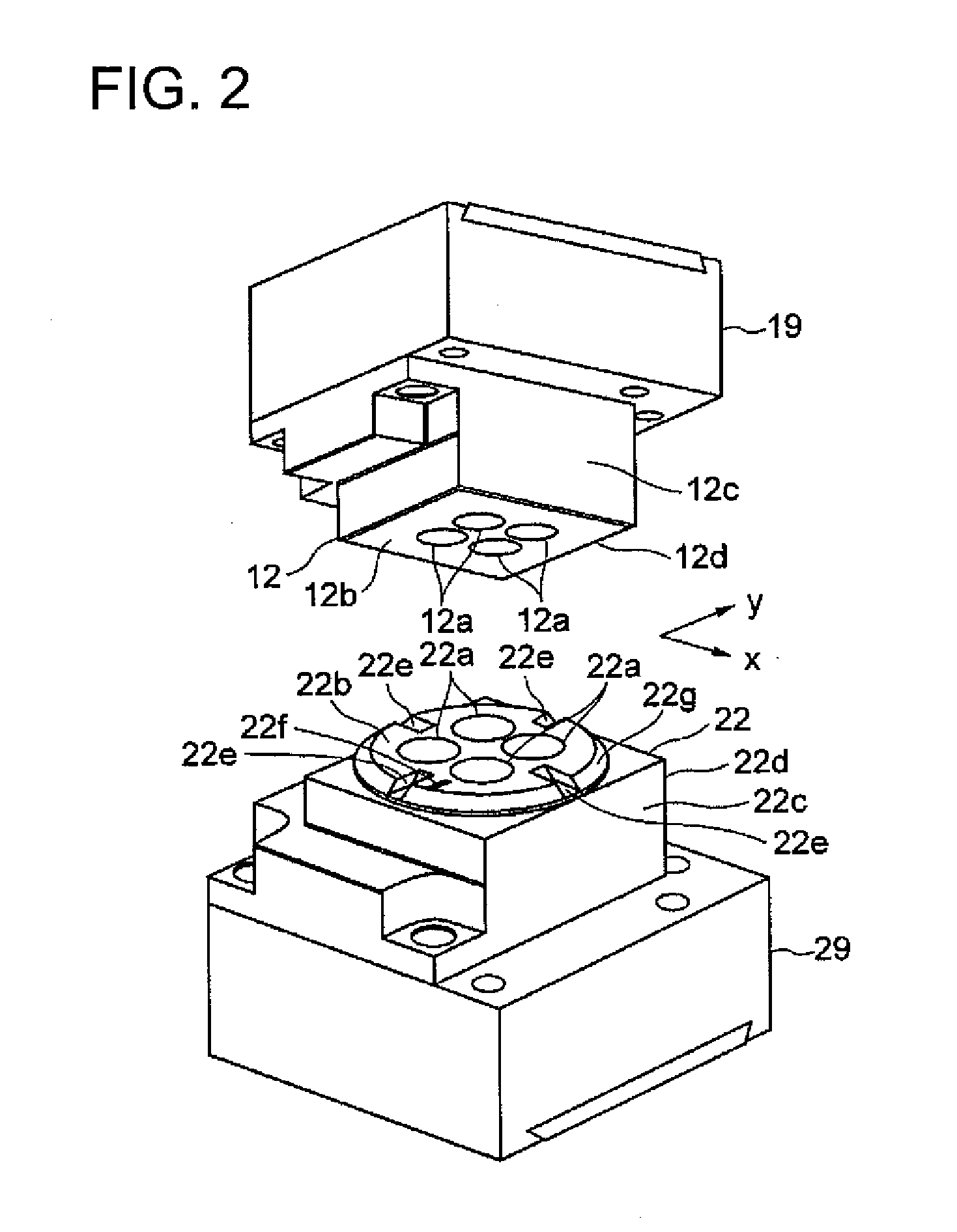Method for Manufacturing Lens Unit, Imaging Device, Method for Manufacturing Mold, Mold For Molding, and Method for Molding Glass Lens Array
a lens array and manufacturing method technology, applied in the field of manufacturing lenses, can solve the problems of increasing the number of lenses required by an instrument, and achieve the effect of accurate and convenient mass production of lenses
- Summary
- Abstract
- Description
- Claims
- Application Information
AI Technical Summary
Benefits of technology
Problems solved by technology
Method used
Image
Examples
Embodiment Construction
[0050]Hereinafter, preferred embodiments according to the present invention will be described with reference to the drawings. FIG. 1 illustrates a sectional view of a part of an injection mold used for this embodiment. It is to be noted that the up-down direction is defined as the same direction as a vertical direction in FIG. 1.
[0051]As illustrated in FIG. 1, a hollow cylindrical core supporting member 1 is a hollow cylindrical member having equal outer diameter throughout the entire length of it, and includes a through-hole 1a in the axial direction, and the material is composed of STAVAX (pre-hardened steel) which is a magnetic substance. The coefficient of thermal expansion of STAVAX is 1.2×10−5 / K.
[0052]Meanwhile, a mold sleeve 2 includes a cylindrical aperture 2a Inside the aperture 2a, the core supporting member 1 is engaged. A core 3, which is made of a ceramic, includes a head section 3b having a molding transfer surface 3a formed on an end face, and a shaft section 3c which...
PUM
| Property | Measurement | Unit |
|---|---|---|
| Force | aaaaa | aaaaa |
| Diameter | aaaaa | aaaaa |
| Distance | aaaaa | aaaaa |
Abstract
Description
Claims
Application Information
 Login to View More
Login to View More - R&D
- Intellectual Property
- Life Sciences
- Materials
- Tech Scout
- Unparalleled Data Quality
- Higher Quality Content
- 60% Fewer Hallucinations
Browse by: Latest US Patents, China's latest patents, Technical Efficacy Thesaurus, Application Domain, Technology Topic, Popular Technical Reports.
© 2025 PatSnap. All rights reserved.Legal|Privacy policy|Modern Slavery Act Transparency Statement|Sitemap|About US| Contact US: help@patsnap.com



